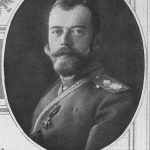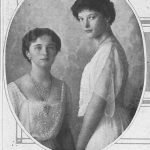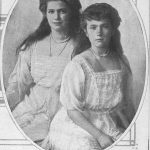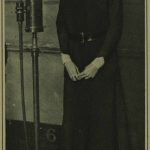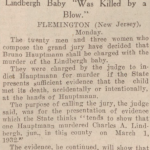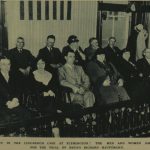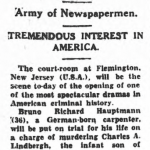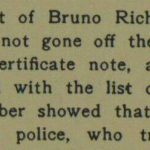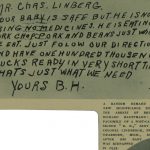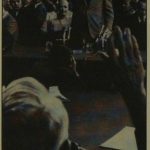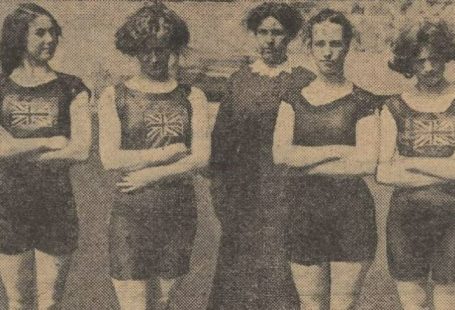At the dawn of a new month, let’s take a look through the newspapers at events that have occurred in the month of March throughout history. Events and stories that once shocked the world have, today, been relegated to distant, vague recollections.
Boston Massacre
It would be an oversight indeed to speak of shocking and significant March events without first mentioning the Boston Massacre, which took place on 5 March 1770. This event is not without controversy depending on one’s audience. As noted in an article from the Lincolnshire Standard and Boston Guardian on 1 June 1930: ‘Whether “The Boston Massacre” of March 5th, 1770, was the wanton shooting of patriotic citizens by a brutal soldiery, or a street riot provoked by the snowballing of a sentry by boodlums [sic], will always be a matter of dispute by historians’. Despite this dispute, the importance and impact of this event is universally accepted. The article continues, ‘Nevertheless the killing of Cripus [sic] Attucks and his companions undoubtedly fanned high the blaze which five years later broke out in the flames of revolution’. This March event was a turning point in the history and evolution of both the British Empire and the soon-to-be-established United States of America.

Russian Revolution
One hundred years ago, the Russian Revolution saw the end of the Tsarist autocracy and the subsequent creation of the Soviet Union. Following the February Revolution of 1917, Emperor Nicholas II abdicated the throne on 15 March and the Russian Empire fell, replaced by a provisional government. Below are photographs printed in The Sketch on 21 March 1917 of Nicholas II and his children.
The second part of the Russian Revolution — the October Revolution — was led by Vladimir Lenin and saw the replacement of the Provisional Government with a communist state and the eventual creation of the Union of Soviet Socialist Republics in 1922. Additionally, the Russian Revolution would lead to the deaths of the royal family and the Russian Civil War, which saw countless deaths and extreme suffering of the Russian people. We will have a more in-depth blog post on the Russian Revolution later this month.
Find more articles on the Russian Revolution
Lindbergh Kidnapping

On 1 March 1932, Charles Lindbergh’s 20-month-old son was kidnapped. While this tragic event unfolded in New Jersey, it was news that spread quickly across the Atlantic. The Illustrated London News wrote a piece on the Lindberghs published 12 March 1932, which included photographs of the scene of the crime (the Lindbergh home), Colonel Lindbergh, Mrs. Anne Lindbergh, and the baby’s nurse, Betty Gow (see images below). The article notes that following the abduction, ‘Colonel Lindbergh deposited the ransom demanded and promised to take no further steps if the baby were returned unhurt. He also enlisted the support of the New York underworld, and, in case the kidnappers were unwilling to deal directly with him, authorised Salvi Spitale and Irving G. Bitz, both former associates of Jack Diamond and racketeers of “excellent reputation,” to act as go-betweens’.
Initially, there was optimism of parents being reunited with Charles Jr. The Illustrated London News on 2 April 1932 reported that one Reverend H. Dobson Peacock said, ‘we expect to have the baby in our own hands or in the hands of Colonel and Mrs. Lindbergh before the end of the week’.

Tragically, however, the body of Charles Augustus Lindbergh Jr. was found 12 May 1932. It was determined that the child died from a blow to the head, and in October 1934, Bruno Hauptmann was charged with the murder. His subsequent trial would be called one of the ‘trials of the century’.
Some of the evidence involved in the trial and conviction included recovered ransom money traced back to Hauptmann and hand-writing analysis between the ransom note and Hauptmann’s writing sample. These photographs relating to the evidence and investigation into Hauptmann were printed in the Illustrated London News on 6 October 1934.
Watergate
And last, but certainly not least, we can’t talk about scandals without mentioning the Watergate scandal and fallout. On 1 March 1974, seven former White House officials in high positions within President Nixon’s administration were indicted on charges of obstruction to the investigation into the Watergate break-in.

The Watergate scandal not only shook the political institutions of the United States’ and the people’s faith in their elected president but also raised eyebrows around the world. The story as it unfolded was recounted in numerous international papers, in particular, the Illustrated London News.
On 1 July 1973, the Illustrated London News reported that a special prosecutor had been named in the Watergate hearings: Archibald Cox.

The Watergate hearings took place in the Senate Caucus Room, and from the image below, you can see just how packed that room was–and just how many news cameras were recording the proceedings.

Ultimately, President Nixon resigned as president of the United States of America. His vice president, Gerald Ford, was subsequently sworn in as the 38th president. On 1 September 1974, the Illustrated London News did a multi-page spread on the career and resignation of Nixon and the inauguration of Gerald Ford.


